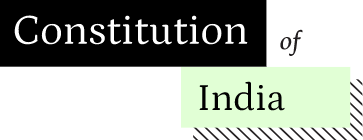We may now proceed to analyse the fundamental rights embodied in the constitutions of some of the more important countries of the world and to frame the draft of a Bill of Rights for incorporation in the Indian Constitution. For this purpose, it is useful to recognise a distinction between two broad classes of rights: there are certain rights that require positive action by the State and which can be guaranteed only so far as such action is practicable, while others merely require that the State shall abstain from prejudicial action. Typical of the former is the right to work, which cannot be guaranteed further than by requiring the State, the language of the Irish Constitution “to direct its policy towards securing that the citizens may, through their occupations, find the means of making reasonable provision for their domestic needs”; typical of the latter is the right which requires, in the language of the American Constitution, that “the State shall not deprive any citizen of his liberty without due process of law”. It is obvious that rights of the first type are not normally either capable of, or suitable for, enforcement by legal action, while those of the second type may be so enforced. Both classes of rights are mentioned together under the head of “Fundamental Rights” in certain constitutions, e.g. in the Constitution of U.S.S.R. and in the Weimar Constitution of the German Reich, possibly because neither was intended to be enforced by legal action. But the distinction is clearly recognised (though not uniformly pursued) in the Irish Constitution, which deals first with “fundamental rights” strictly so called, and then with “directive principles of social policy”, the latter being expressly excluded from the purview of courts. A similar distinction is recognised in Dr. Lauterpacht’s International Bill of the Rights of Man (1945). The substantive provisions of the Bill are in two parts. Part I dealing with rights meant to be enforced by ordinary courts and Part II dealing with rights incapable of or unsuitable for such enforcement. We may usefully follow this plan and separate the two classes of rights: Part A may deal with fundamental principles of State policy and Part B with fundamental rights strictly so called. The following draft is suggested for Part A; it is meant to be illustrative rather than exhaustive:
